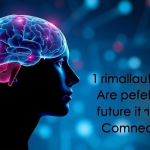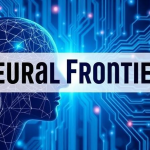Healthcare is undergoing a profound transformation. We’re shifting away from the traditional one-size-fits-all treatment model toward a new frontier: hyper-personalized medicine. Powered by breakthroughs in genomics, microbiome analysis, and wearable biosensor technology, this next-generation approach is not only redefining how we treat illness—it’s reshaping how we prevent it. This emerging paradigm is grounded in understanding the unique biological blueprint of each individual, enabling a future where care is tailored, predictive, and proactive.
The Genomic Revolution: DNA as the Blueprint for Care
At the heart of personalized medicine is the human genome. Thanks to rapid advancements in genomic sequencing, we can now decode an individual’s DNA faster and more affordably than ever before. This data provides valuable insights into disease risk, drug responsiveness, and even optimal lifestyle choices.
For instance, pharmacogenomics—the study of how genes affect a person’s response to drugs—is enabling physicians to prescribe medications that are more effective and have fewer side effects. Patients with certain gene variants may metabolize drugs differently, making some treatments ineffective or dangerous. By identifying these variations, healthcare providers can tailor prescriptions to maximize efficacy and minimize harm.
Looking ahead, genome-based diagnostics will play a critical role in early detection of diseases like cancer, diabetes, and heart disease—often before symptoms appear. Imagine undergoing a simple blood test that reveals your predisposition to conditions years before they manifest, allowing for early interventions that could save lives.
Microbiome Mapping: The Gut-Health Connection
While our genes tell one part of the story, the microbiome—the vast ecosystem of bacteria, fungi, and viruses living in and on our bodies—tells another. The gut microbiome, in particular, has emerged as a key player in everything from immune function to mental health.
Each person’s microbiome is unique and shaped by diet, environment, medication use, and genetics. By analyzing the composition and behavior of these microbial communities, scientists are uncovering links to a wide range of conditions including obesity, autoimmune diseases, depression, and even neurodegenerative disorders.
Future healthcare will harness microbiome data to develop targeted nutritional plans, personalized probiotics, and therapies that manipulate microbial balance. Companies are already offering microbiome testing kits that provide dietary suggestions based on your gut flora. In the next decade, we may see precision treatments that modulate the microbiome to prevent or reverse disease—essentially turning gut bacteria into living medicine.
Wearable Biosensors: Real-Time Health Monitoring
Wearable technology has evolved far beyond step counters and heart rate monitors. The latest generation of biosensors can track a wide array of biomarkers in real time, including glucose levels, hydration, respiratory rate, blood pressure, and even stress indicators.
These devices offer continuous health insights, allowing individuals and clinicians to monitor changes and detect anomalies instantly. Rather than waiting for symptoms to emerge or relying on annual checkups, patients can now receive alerts when something is off, enabling quicker intervention.
In the near future, biosensors may be embedded in clothing, skin patches, or even implanted beneath the skin. This always-on health surveillance will feed data to AI-driven platforms capable of identifying patterns, predicting health risks, and recommending personalized actions. Imagine your smartwatch alerting you to increased cardiovascular risk a week before a heart event, giving you the chance to take preventive measures.
AI and Big Data: The Backbone of Personalized Care
The power of hyper-personalized healthcare lies in the convergence of multiple data streams—genomic, microbiomic, physiological—and the ability to make sense of them. That’s where artificial intelligence and machine learning come in.
AI algorithms can analyze enormous datasets to uncover patterns humans would miss. These systems are already being trained to predict disease onset, suggest optimal treatments, and flag at-risk individuals. Combined with electronic health records, wearable data, and personal history, AI could provide a real-time health dashboard for every individual.
One emerging concept is the creation of digital twins—virtual replicas of a patient’s biology built from personal health data. These models could be used to simulate how different treatments might work for a specific person before any medication is administered, reducing trial-and-error in clinical decisions.
From Reactive to Proactive: The Future of Preventive Medicine
Historically, healthcare has been reactive—patients seek help only after symptoms arise. Hyper-personalized medicine flips that script, emphasizing prevention over treatment.
Predictive analytics, fueled by continuous data collection, will allow healthcare systems to intervene before problems escalate. For example, a person identified as genetically predisposed to Type 2 diabetes could receive personalized diet and exercise plans, microbiome therapies, and biosensor-driven feedback to delay or even prevent the disease.
This approach will also transform public health. Population-wide screening and targeted prevention programs could be designed using aggregated, anonymized data, reducing the burden on healthcare systems while improving outcomes.
Ethical Considerations and Data Privacy
While the benefits are enormous, the rise of personalized medicine also raises ethical concerns. How do we protect sensitive genomic and biometric data from misuse? Who owns your health data—patients, providers, or tech companies? As personalized healthcare becomes the norm, robust data privacy regulations and ethical frameworks will be essential to ensure trust and safety.
Transparency in data use, consent-based sharing, and decentralized data storage models such as blockchain may play important roles in building secure and ethical healthcare ecosystems.
A Glimpse Into 2035: What Healthcare Could Look Like
Fast forward to 2035. A 25-year-old woman wakes up to a gentle vibration from her biosensor patch. Her wearable device detected irregular glucose trends and alerted her AI health assistant. A quick scan of her digital twin model confirms an early warning for insulin resistance. Based on her microbiome data, the assistant suggests a tailored probiotic formula and dietary changes. Her genetic profile recommends avoiding certain medications, and she receives a same-day prescription, 3D-printed at home, perfectly suited to her biology.
She never needed to see a doctor—because her care was always-on, personalized, and preventive.
Conclusion: The Personalized Era Is Now
The convergence of genomics, microbiome science, wearable technology, and AI is ushering in a new era of hyper-personalized healthcare. We are moving from reactive, generalized treatment to proactive, precision prevention. This future will not only extend lifespans but improve the quality of life in ways we’re only beginning to imagine.
What once seemed like science fiction—healthcare tailored to your unique biology—is fast becoming reality. As technology continues to evolve, so too will our ability to treat the individual, not the average. The next generation of medicine is personal—and it’s already here.






Leave a Reply